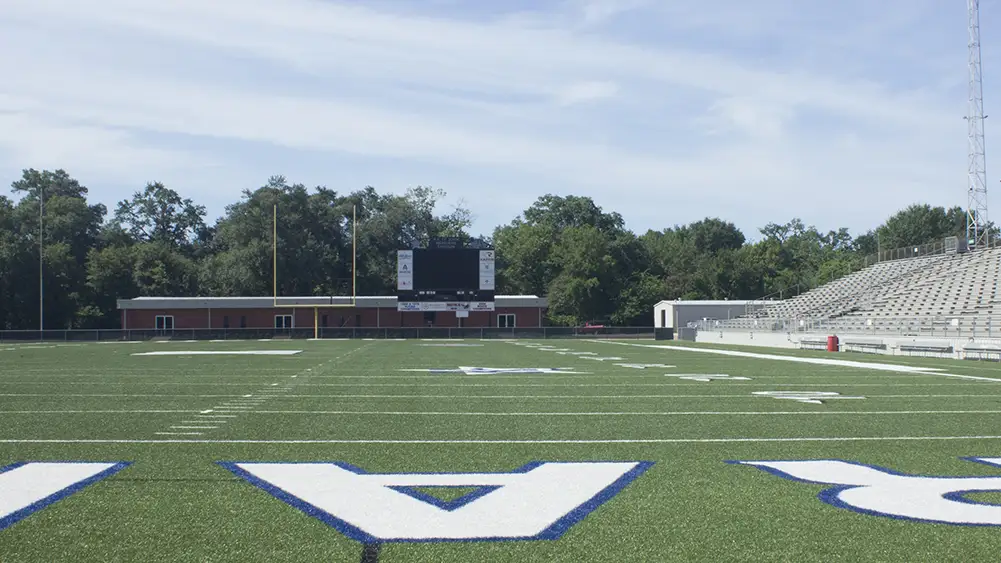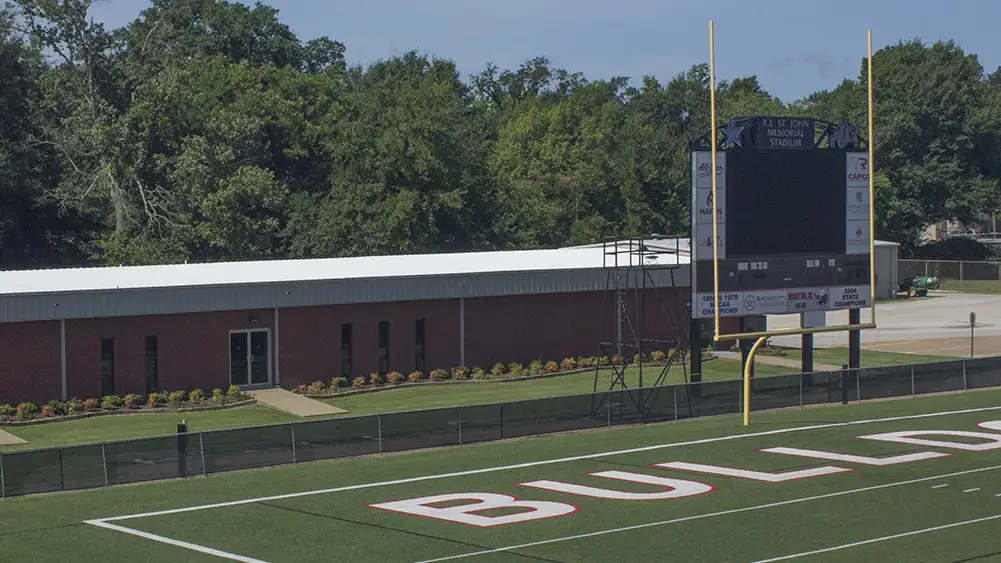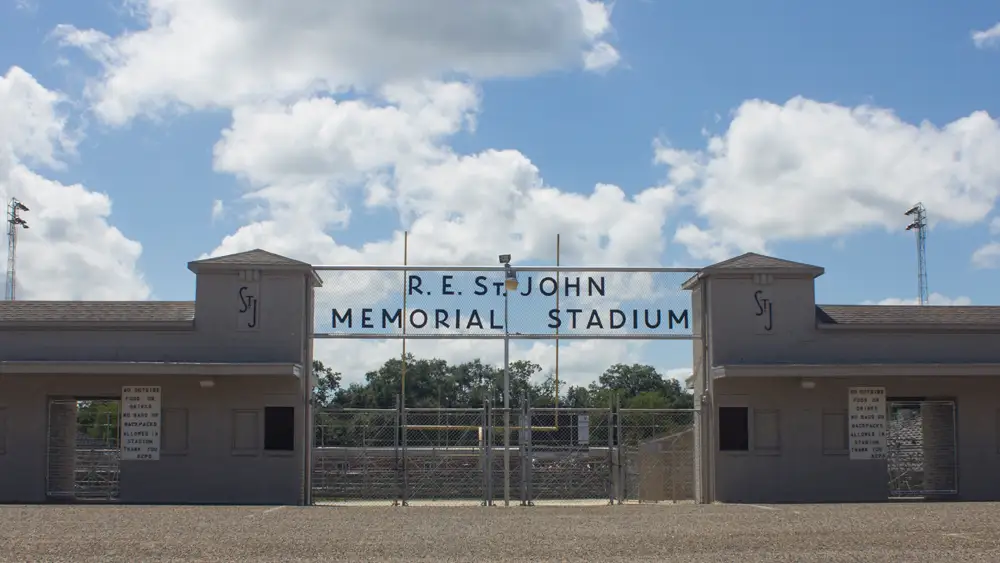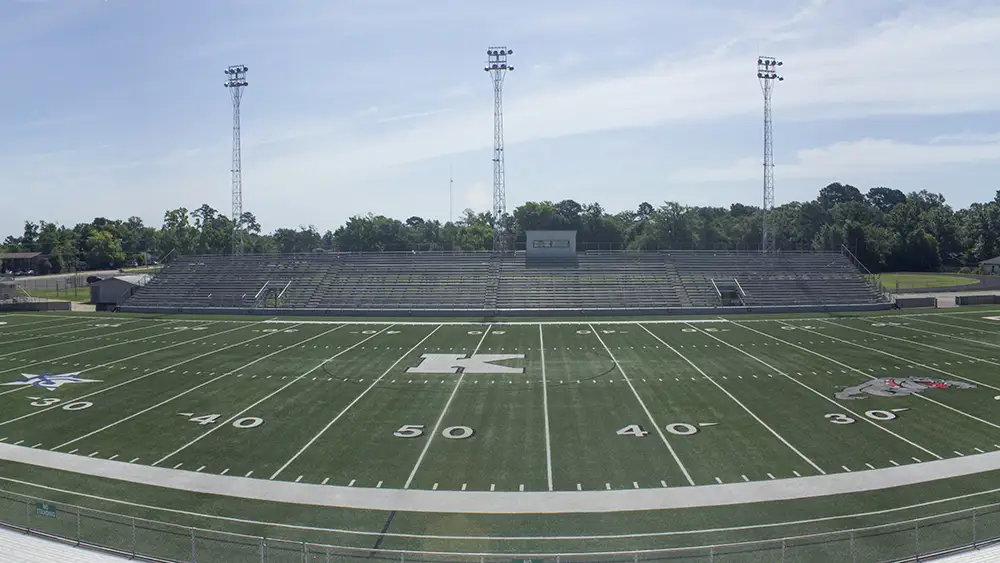



The Kilgore College Rangers play at R.E. St. John Memorial Stadium in Kilgore. The stadium was renovated with a brand new artificial turf field in the summer of 2012. The stadium is also the site of a new field house and a brand new scoreboard with video replay.
In the fall of 1937, the board announced plans for construction of a new athletic stadium to be located at Harris Street and South Martin Street. It would originally seat 5,500 spectators. Work began immediately and the C.S. Lambie Co. of Longview was awarded the $40,000 contract on Feb. 18, 1938. Completed in late summer, the new Kilgore Athletic Stadium was one of the finest in the state. A rousing pep rally and colorful parade created a holiday atmosphere for the formal dedication on Sept. 15, 1938, as a capacity crowd watched Kilgore’s state champions defeat Murray State College, the Oklahoma state champions, 16-0.
In 1948, the stadium was renamed R.E. St. John Memorial Stadium and was expanded by 80 percent by adding stands with the east stands being extended to equal the west end. In May of 1949, the board accepted a plan whereby the Kilgore Independent School District deeded one-half interest in the stadium to the college in return for $8,223.04 and a pledge to operate and maintain the facility jointly. (taken from A History of Kilgore College:1935-81)
About Richard Earl (R.E.) St. John:
Richard Earl (R.E.) St. John was born in 1914 in Hunt, Texas. He was the third child of Dock and Jenie St. John. He was a coach at Kilgore High School, but left that position in 1941 to serve his country to join the U.S. Navy in its efforts in World War II. He died a hero’s death when the ancient destroyer, the U.S.S. Borle, went down in the Atlantic in November of 1943 after an historic battle with a German submarine. He lost his life helping rescue his fellow Navymen. Two plaques are mounted on the entrance to R.E. St. John Memorial Stadium that lists 118 local men who lost their lives during WWII from 1941-45. (Thanks to Norman Harrell, relative of R.E. St. John, for providing this information)